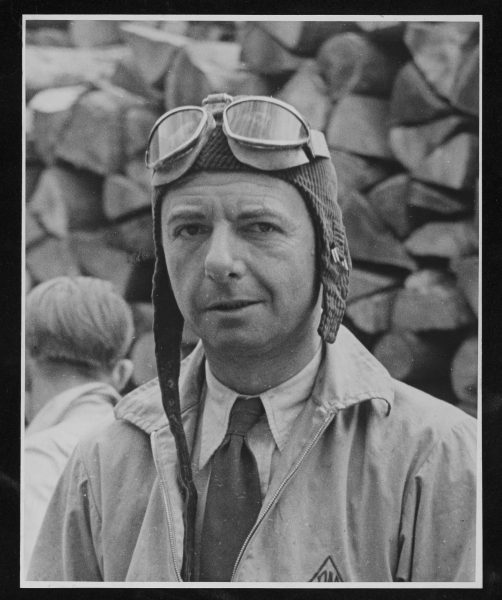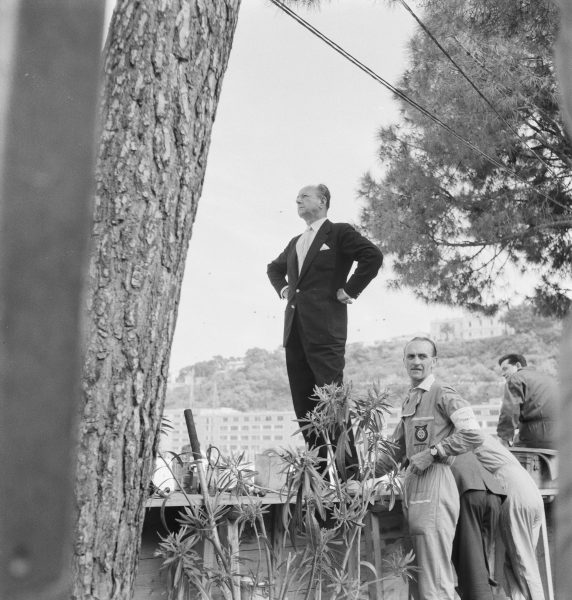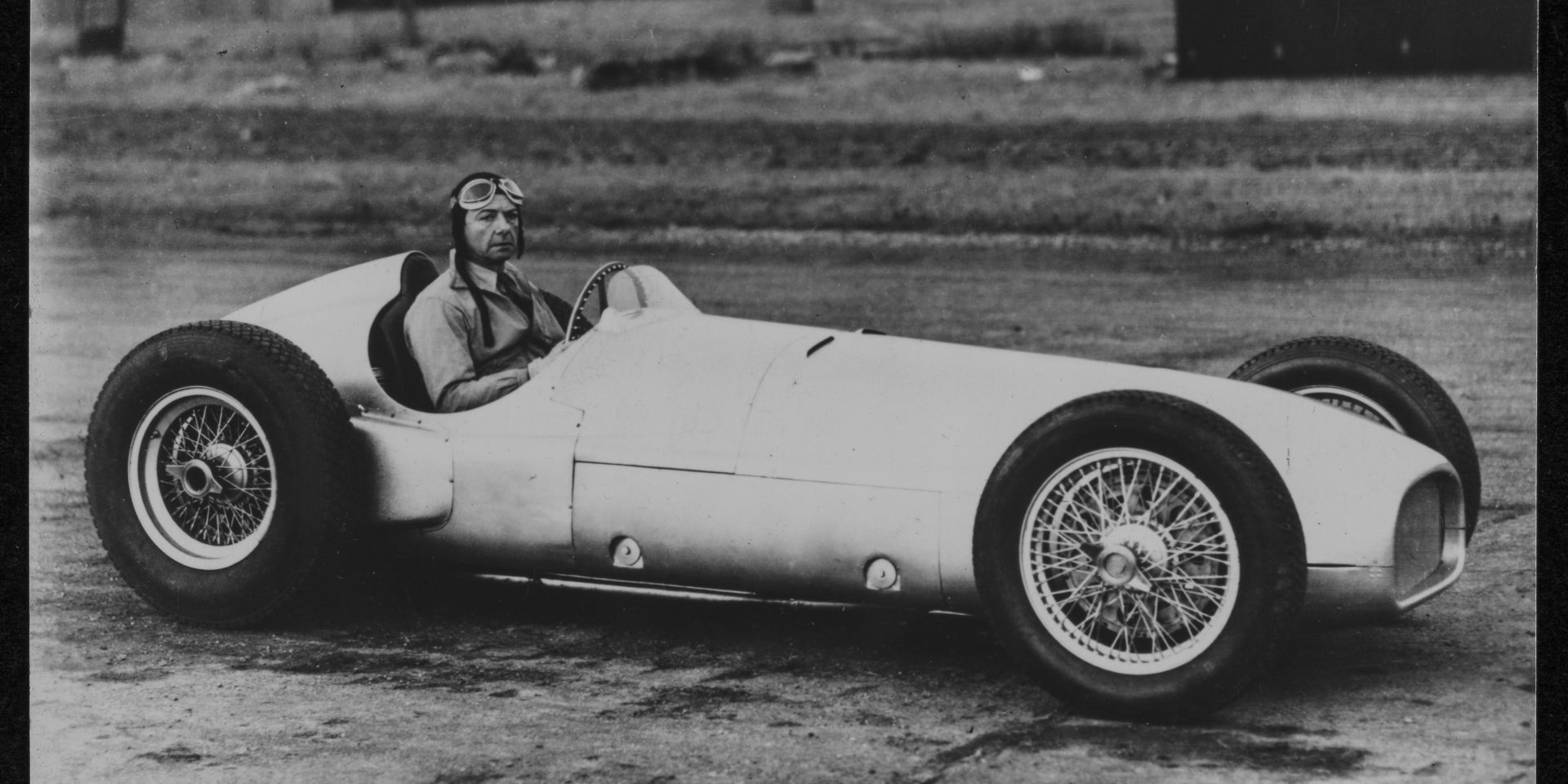Spotlight: The Legacy of Raymond Mays
Laying some key foundations for the motorsport scene in the UK, Raymond Mays built up a small team in the little town of Bourne that would help pave the way for Britain to become the racing hub of the world. Shayni Solanki delved into Raymond Mays’ legacy in motorsport, from founding the trailblazing Formula 1 team British Racing Motors to cementing himself as an LGBTQ+ icon for generations to come.

Born as Thomas Raymond Mays in 1899, the young car enthusiast grew up in the market town of Bourne, Lincolnshire. The only child of local business owners, he was a well-known figure in town. Attending a local public school, he met the aspiring automotive engineer Amherst Villiers who would eventually join him at Cambridge University. Travelling with his father to motor racing events across the country, a young Mays developed a love for cars that would inevitably see him take to the track at the Brooklands Motor Course.
Setting records and enjoying success at Brooklands and Aston Clinton, Mays gained prominence when competing in Inter Varsity speed hillclimbing races. With Villiers setting up his cars, the duo went on to demand the respect of the motor racing community. Mays took his first win as a Cambridge University undergraduate, at Brooklands in 1921. Slowly gaining recognition, Mays built up a community of passionate racing enthusiasts on and off track.
What we now know as the Motorsport Valley was once full of dirt tracks and hill climbing. When Raymond Mays returned from the First World War, he knew that there was a gap to fill. At the time, Europe was the place to race cars. With the likes of Alfa Romeo, Mercedes-Benz, and Ferrari prancing around race tracks across Europe, British motorsport was largely held in respect to its drivers. To turn a small market town into a bustling hub of motorsport, Mays started by utilising local talent.
Jackie Stewart has famously said if it wasn’t for BRM, there would be no British motorsport. You can take that back a step to Raymond Mays because it was his vision that brought life to British motorsport.
British Racing Motors Association committee member Anthony Delaine-Smith has a family legacy tied to Raymond Mays. Living in the adjacent property to Mays’ Eastgate House for generations, Delaine-Smith had nothing but praise to extend. Delaine-Smith recalled that everyone locally knew him as Raymond or Mr Mays, claiming that he was a well-spoken and patriotic Englishman with the community’s best interest at heart. Hearing stories of Mays entertaining visitors across motorsport and theatre, he was respected off the track too.
With many hurdles in his way, Mays had to endure the Second World War in his journey to redefine British motorsport. Joined earlier by ex-RAF engineer Peter Berthon in the 1930s, Mays and Villiers received backing from Humphrey Cook to establish English Racing Automobiles. Marking the first step in broadening racing culture, English Racing Automobiles brought life to Bourne by providing jobs, inspiration, and success. In 1936 the motor racing brand topped the esteemed Maserati marque in world-class Formula 2 racing.
British Motor Racing Trust was born in 1946, built on a post-war foundation that utilised the budding workforce in the small town of Bourne. Alongside Berthon, Mays put British motorsport at the forefront of the racing industry. Growing stronger each year, the team picked up wins at Goodwood and Zandvoort. By 1962, British Motor Racing won the Formula 1 Constructors’ and Drivers’ Championship titles with British driver Graham Hill.

Nick Owen, of British Racing Motors, said: “Jackie Stewart has famously said if it wasn’t for BRM, there would be no British motorsport. You can take that back a step to Raymond Mays because it was his vision that brought life to British motorsport.
“Everyone should be incredibly proud. Britain really is the home of motorsport, and Raymond Mays, having been a successful driver pre WWII, had that clear post-war vision of all he wanted to achieve for Britain, and all that was achieved, and is still being achieved today.”
Not only did he put Britain at the forefront of motorsport, but Mays did so as an LGBTQ+ man in motorsport. Although Mays never officially came out, it is widely known amongst the team and all involved that the icon was gay. A man who worked in the factory during its prime racing years suggested that it was common knowledge that Raymond Mays was gay. “He frequently came into the factory with one, or sometimes two, good-looking young men who he showed around the cars. He would engage us in conversation quite openly with no sign of embarrassment. Similarly, he would show up at testing or race meetings with ‘company’,” the man said.
While Raymond Mays’ contributions to British motorsport on the track were extraordinary, his lasting impact as an LGBTQ+ man in motorsport deserves all the flowers.
Owen explained: “Those close to him knew he was gay, as well as those in the factory and many in the town, and it wasn’t an issue to them. Mays didn’t talk in public about his sexuality but he certainly didn’t hide it from those who knew him.
“Looking through records, there’s little mention of his personal life, though we do have to remember that homosexuality was illegal and far from accepted in society. Now widely accepted as a gay racing icon, Mays is known to many as an inspirational beacon of hope.”
While Raymond Mays’ contributions to British motorsport on the track were extraordinary, his lasting impact as an LGBTQ+ man in motorsport deserves all the flowers. 100 years after his birth, his team British Racing Motors now work in his hometown of Bourne to spread his vision and celebrate his legacy. Working with the Silverstone Museum, British Racing Motors, Bourne Motor Club and the BRMA, Owen has been involved in the organisation of events to inspire more young people to pursue careers in motorsport.

Working with local schools to educate young people about Mays’ impact on motorsport, a new focal point is proving that there is a space for everyone. Mays proved that motorsport isn’t just about becoming a driver, the off-track contributions are just as important. Showing the next generation a successful LGBTQ+ racing icon like Raymond Mays is not just a lesson, but it is a symbol that they, too, can get into the sport.
Inspiring the next generation, a young student from the recent Engineered in Bourne event proactively designed a new Heritage Trail for the town, incorporating every aspect of its 100-year motorsport history. Shaping the future of motorsport in Britain, Mays blazed a trail for the next generation, whether he realised it or not.
Bourne Mayor Cllr Brenda Johnson said: “Bourne has always extended a warm and friendly welcome to everyone irrespective of religion, race, colour or sexual orientation. The town is extremely proud of its ‘motor racing son’ Raymond Mays and will always ensure that his legacy is embedded in the town’s heritage.”
Raymond Mays proved that a young LGBTQ+ Brit could make it to the top of motorsport, and in doing so he changed history.

Racing Pride would like to give a huge thanks to Nick Owen from British Racing Motors for providing many resources and ideas to the piece, and to everyone who has contributed in tribute to the motorsport giant Raymond Mays.
Author: Shayni Solanki



